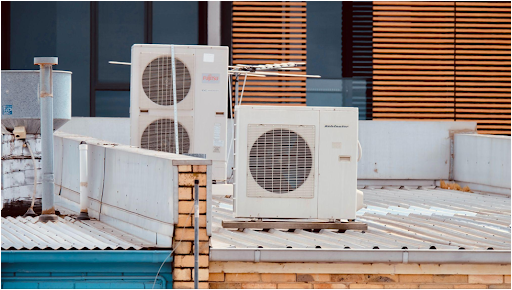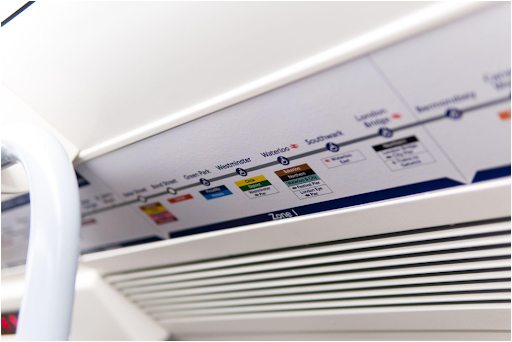Implementing regular AC maintenance is the ideal way to keep your system operating optimally throughout the summer. A professional will have better knowledge of your system and can identify potential problems before they turn into big headaches.
Keep your condenser unit clear by trimming back plants, weeds, and tall grass to avoid blockages. Vacuum the aluminum fins using a soft-bristled brush to prevent bending.
Here are a few tips and ways on how to keep your AC system running smoothly during the scorching summer season.
Table of Contents
1. Change the Filter
If your AC is continuously running during cooling cycles or all day long or has stopped cooling altogether, this could be a telltale sign that the air filter needs changing – an easy task that will ensure the proper functioning of your system.
Turn off the power to your air conditioning unit (this is also an opportunity to perform a visual check). Locate the filter slot, either in the wall unit itself or one of your vents; look for an easily removable filter cover.
As soon as you have removed your old filter, insert a new one in its place. Be sure to read labels on replacement filters to determine what size they require – one simple method for this can be to hold paper against the vent and observe how they pull toward the vent.
Filters that are the correct size should fit snuggly into their slots. Some filters contain arrows indicating airflow direction, so when installing new filters make sure that you insert them the same way each time.
Maintaining clean air filters is one of the keyways to keeping your AC system operating efficiently and avoiding costly breakdowns. You can visit this site for tips on cleaning your AC system’s filters.
2. Check the Thermostat
Thermostats are an integral component of HVAC systems, helping regulate the system and maintaining comfort levels. If they malfunction, however, significant changes could take place within your HVAC system’s functionality. Luckily, thermostats are generally easy to troubleshoot using simple tests and fixes.
Check your thermostat display screen first if its display screen is dark; that indicates no power and should be an easy fix by replacing batteries.
Another possibility may be that a circuit breaker in your electrical box has been tripped; should this happen, flipping it back on will restore power to both your thermostat and HVAC system.
A dead display screen may indicate that your thermostat’s batteries are low, or it has experienced a major malfunction. In such a scenario, replace or contact an HVAC professional for repairs on the unit immediately.
If your house has two stories, be sure that the thermostat in the lower levels is set a few degrees warmer to reduce how hard your AC has to work when you are upstairs. Tinting windows during the day to block sun rays also can help ease pressure on your air conditioner system and lessen its workload. Furthermore, do not adjust temperature settings frequently while away as this causes it to overwork itself and wear out faster.

3.Turn Off the Power
Like with any electrical equipment, when cleaning or performing maintenance on your air conditioner system it is crucial to shut off power.
The easiest way is by finding its outdoor unit’s power shutoff switch; typically found near its condenser and concealed behind a protective cover, simply lift this cover to switch it “off.” Doing this will prevent unexpectedly hot weather from turning your AC on unintentionally while protecting you from potential injury or electrocution while working on it.
If your air conditioner will not turn off, chances are it is stuck in energy-saving mode or has a clogged drain line.
Most systems contain an automatic safety switch to detect when a condensate overflow pipe is blocked with water; if this switch is faulty and does not shut off, when necessary, replace it. You may also require replacement of the drip pan beneath the unit – in these instances contact an HVAC specialist immediately for advice and replacement services.
4. Clean the Condenser
Dirt-covered coils force cooling equipment to work harder, which results in reduced efficiency, increased wear, and increased costs to operate. You can click the link: https://news.energysage.com/how-many-watts-does-an-air-conditioner-use/ for more information. Cleaning the condenser regularly can help increase efficiency while prolonging the equipment’s lifespan.
Follow these steps to complete this task yourself:
First, disconnect the power. Air conditioners use 240V systems that could cause shock if left running while cleaning them. Next, open up the cover. Using either a screwdriver or drill, remove screws securing the fan grill over the motor and blades; be careful not to disconnect wires as you do this step.
Brush away large chunks of debris before using an adjustable fin comb to straighten any bent coil fins – these can usually be found at most hardware stores.
Use a manufacturer-approved cleaner on the coils. Because coil cleaner can be caustic and burn skin, follow label directions carefully and ensure you have sufficient ventilation as well as safety glasses and face shields if available.
Kriti Sharma, a seasoned content writer, my passion for words fuels my writing journey. Armed with a knack for storytelling, I thrive in crafting engaging, informative, and persuasive content. My expertise spans various niches, from technology and business to travel and wellness. I bring versatility to the table, adapting my tone and style to suit each project’s unique needs. Whether it’s an insightful blog post, a compelling marketing copy, or an in-depth research article, my commitment to quality and authenticity shines through. Join me on a literary adventure as we explore the power of words together.







